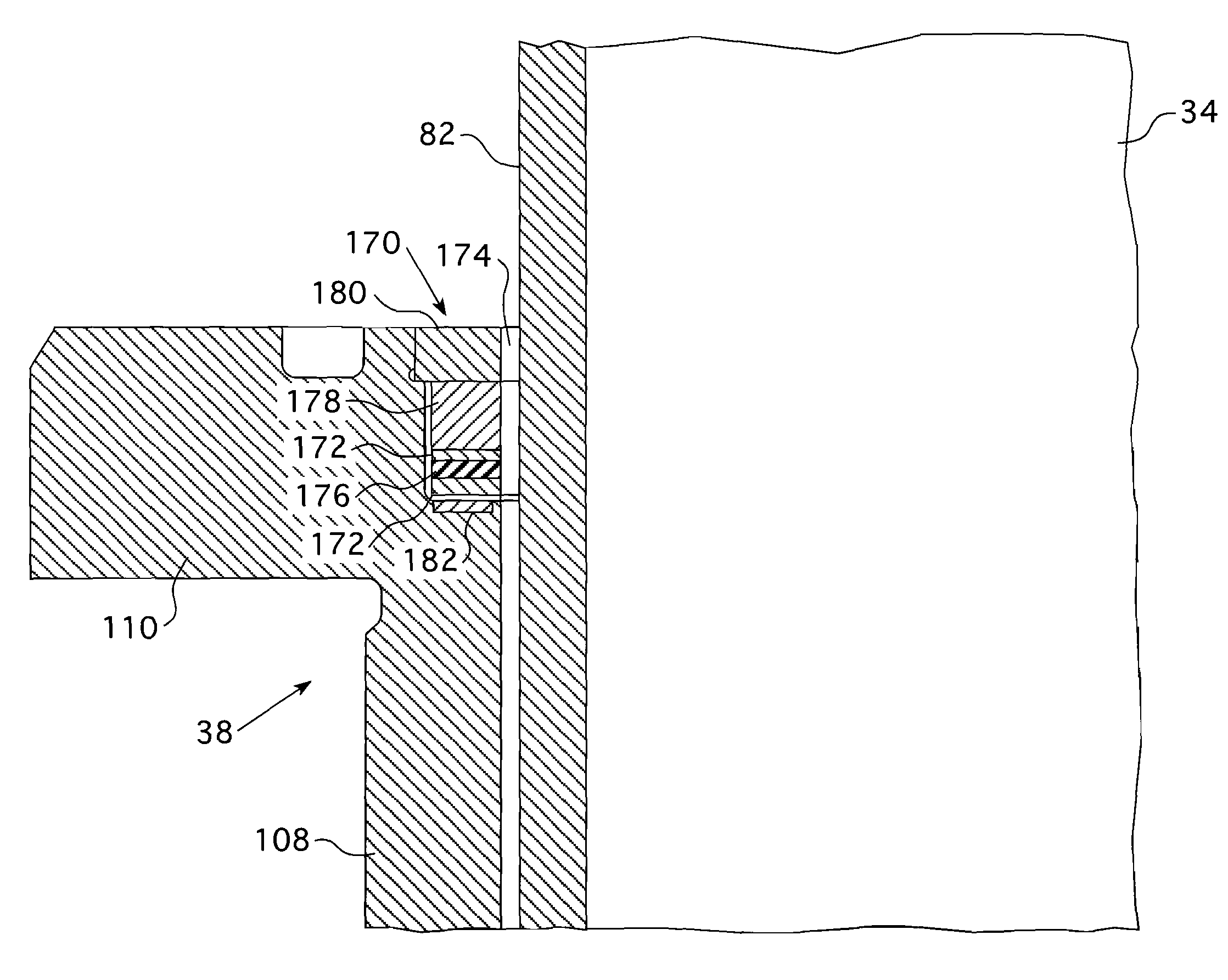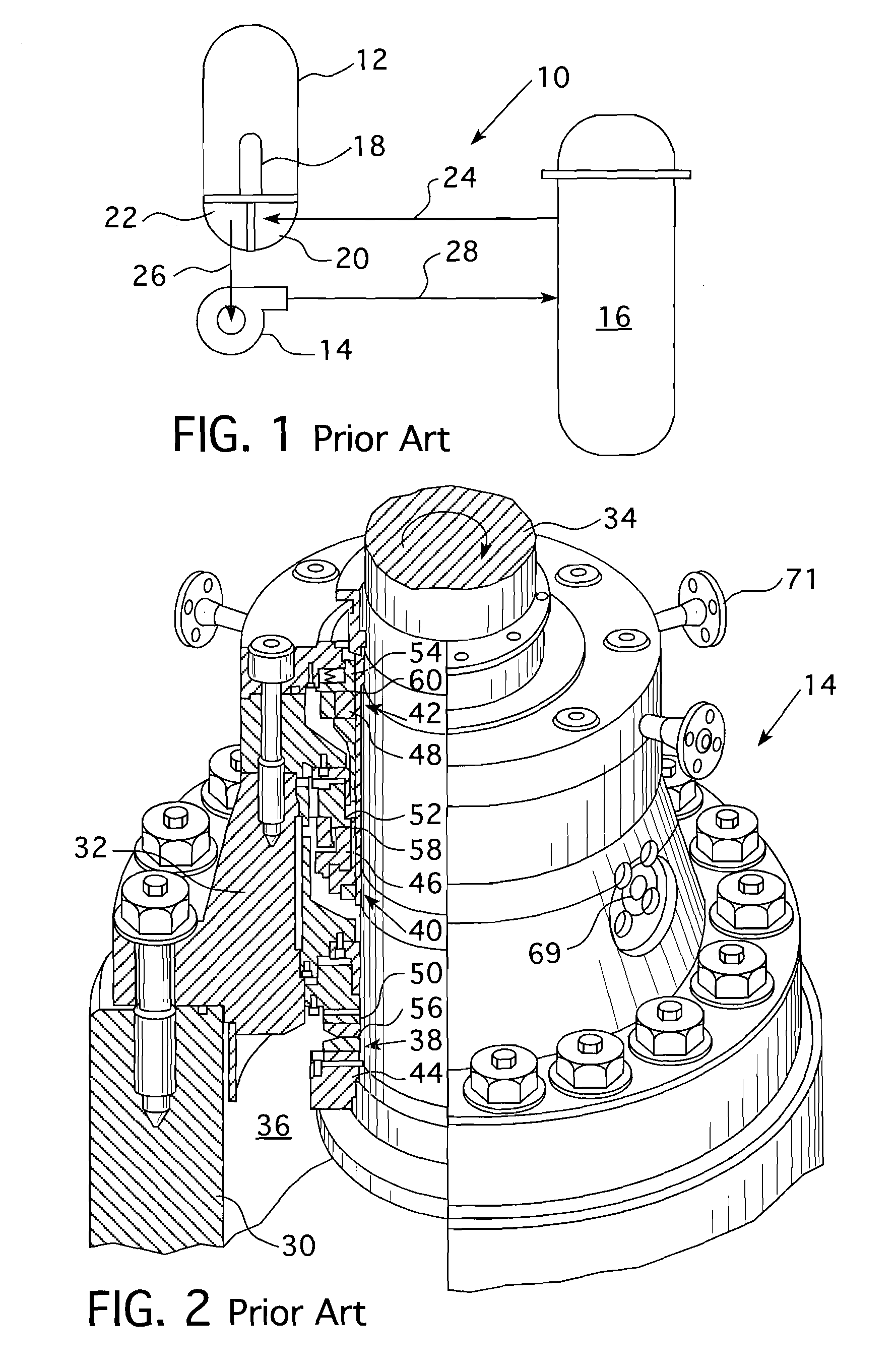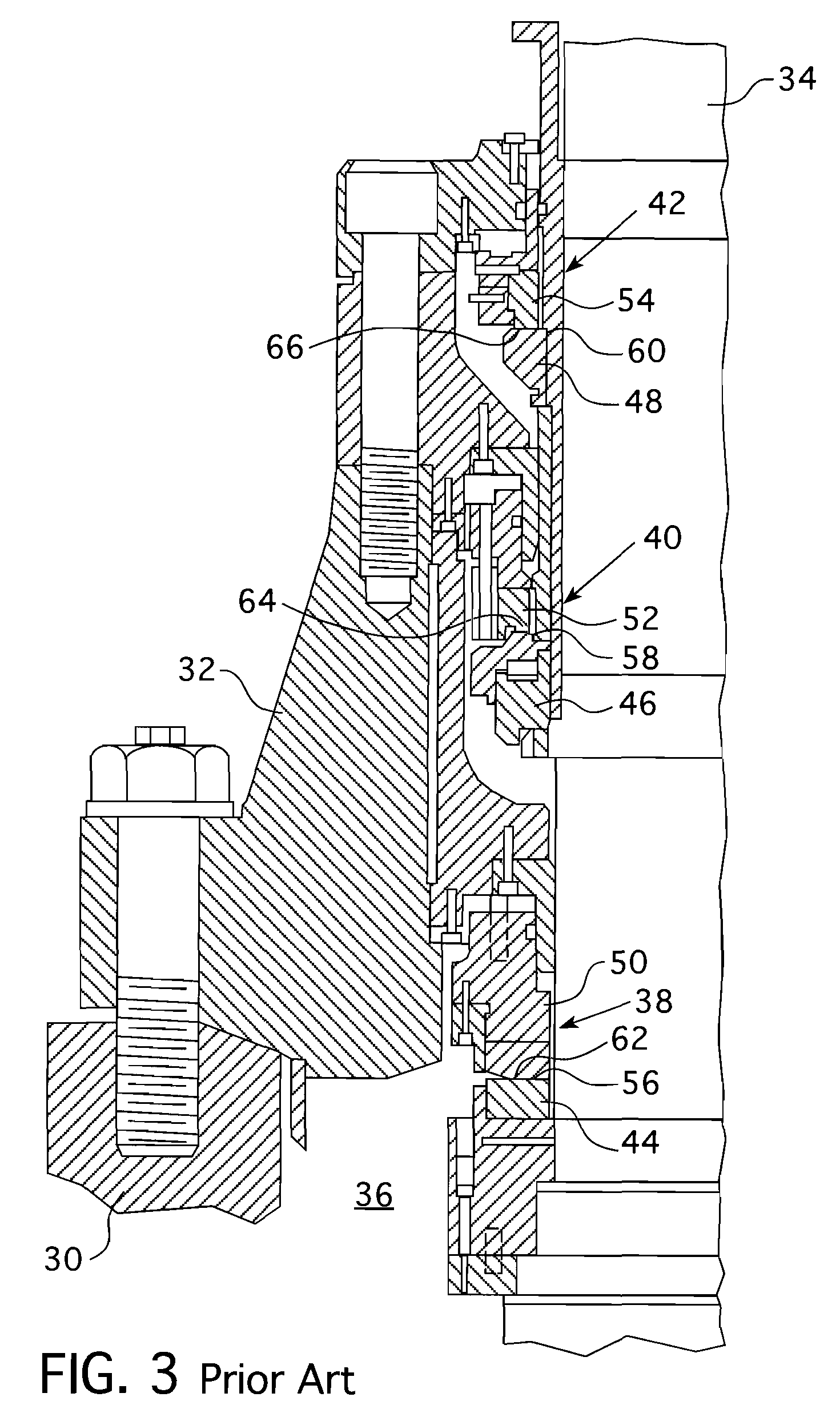Thermally activated shutdown seals for rotatable shafts
a shutdown seal and rotating shaft technology, applied in the direction of machines/engines, liquid fuel engines, lighting and heating apparatus, etc., can solve the problems of limiting the available pressure, further wear, unstable and unpredictable, etc., and achieve the effect of improving the roundness of the annulus of the ring
- Summary
- Abstract
- Description
- Claims
- Application Information
AI Technical Summary
Benefits of technology
Problems solved by technology
Method used
Image
Examples
second embodiment
[0044]In accordance with the present invention, as shown in FIGS. 5 and 7-9, an additional seal 170 is advantageously provided in the pump 14 as a backup safety or shutdown device which is actuatable to prevent excessive leakage along the shaft 34 between it and the seal assemblies 38, 40, 42 of the pump in the event of a loss of seal cooling. As shown in FIG. 5, the shutdown seal 170 is situated in a machined groove in the annular opening in the insert 110 of the primary number 1 seal 38. The shutdown seal is characterized by a “split ring”172 that is designed (i) to surround the shaft 34 with an annulus 174 therebetween during normal operation and (ii) to constrict against the shaft 34 when the shaft significantly slows or stops rotating after a loss of seal cooling. The split ring 172 is a single piece discontinuous ring member that is split axially and the confronting ends are maintained in a spaced relationship by a spacer 176 during normal pump operation. In FIG. 5 the opposin...
first embodiment
[0045]FIG. 5 depicts a shutdown seal 170 in accordance with this invention installed in the reactor coolant pump of FIG. 4. The shutdown seal of FIG. 5 is designed to activate after a loss of seal cooling and seal leak-tight when the pump shaft 34 slows down or is not rotating. The shutdown seal is located within the pump housing, encircling the shaft 34. In the case of the type of reactor coolant pump illustrated in FIGS. 2-4, the #1 seal insert may be modified by machining out a portion of the inner diameter at the top flange. Until activated, the shutdown seal 170 is substantially completely contained within the space once taken up by the #1 insert prior to modification, thus substantially unaltering the annulus 174 between it and the shaft 34. In this way coolant flow through the annulus 174 along the shaft 34 is not substantially impeded during normal operation of the rotating equipment.
[0046]The activating portion of the shutdown seal 170 of FIG. 5 is made up of a low melting ...
PUM
 Login to View More
Login to View More Abstract
Description
Claims
Application Information
 Login to View More
Login to View More - R&D
- Intellectual Property
- Life Sciences
- Materials
- Tech Scout
- Unparalleled Data Quality
- Higher Quality Content
- 60% Fewer Hallucinations
Browse by: Latest US Patents, China's latest patents, Technical Efficacy Thesaurus, Application Domain, Technology Topic, Popular Technical Reports.
© 2025 PatSnap. All rights reserved.Legal|Privacy policy|Modern Slavery Act Transparency Statement|Sitemap|About US| Contact US: help@patsnap.com



